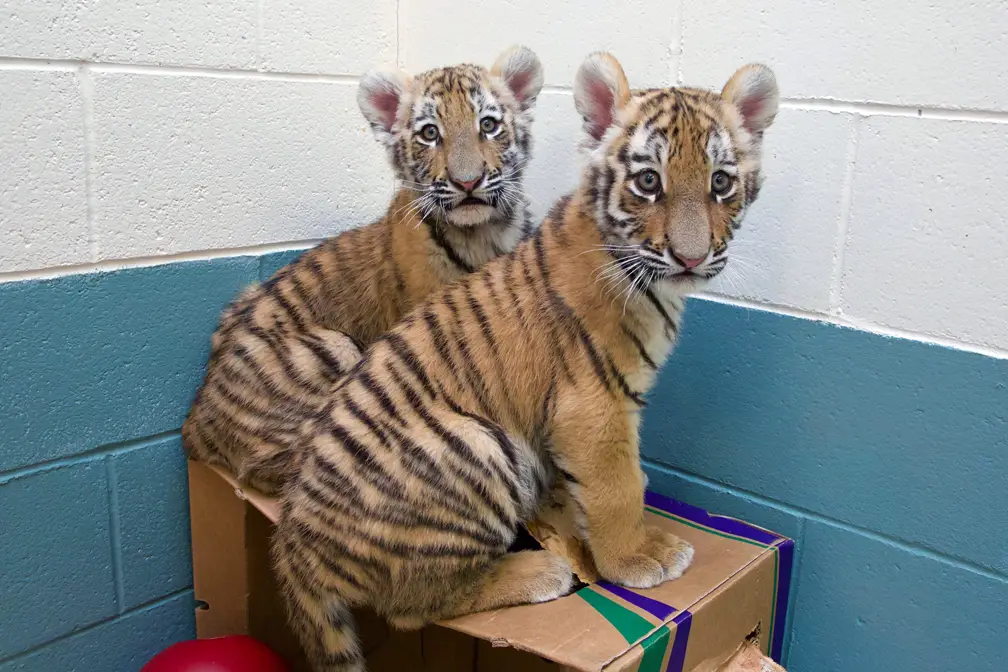Bridgeport’s Beardsley Zoo saves rare species while seeking increased attendance
Gregg Dancho finds himself at a curious crossroad. As director of Bridgeport”™s Beardsley Zoo, he coordinated the institution”™s 95th anniversary celebrations last year and he recently received a flurry of media attention for the back-to-back births of some of the zoo”™s rarest residents. At the same time, he has been stymied in trying to bring the zoo to a higher level of animal presentation.
“As zoo professionals, we want to see these removed,” he said, pointing to the black barred enclosures that house some of the animals for outside exhibition. “The habitats here are not something I want to see here and we will be removing them.”

However, that offers yet another challenge: financing the construction of modernized exhibits. The Beardsley Zoo operates on an annual budget of roughly $5 million, with sourcing evenly divided between earned revenue, philanthropic entities and a mix of city and state government support. Connecticut”™s fiscal problems have limited Hartford”™s largesse, and corporate support has dwindled in recent years.
“We”™re as close to a pure nonprofit as we can possibly be,” Dancho added.
The 22-acre Bridgeport institution, which is run by the Connecticut Zoological Society, bills itself as “Connecticut”™s Beardsley Zoo” and attracts 300,000 visitors per year. It has become a popular site for birthday parties and weddings, and Dancho even envisions bringing corporate events to the site. However, competition remains an issue as myriad attractions compete for the leisure time and funds of Connecticut families.
“The Bronx Zoo has been the quintessential zoo trip ”” I went to the Bronx Zoo when I was in grammar school when I grew up in Stratford,” acknowledged Dancho, who also mentioned Rhode Island”™s Roger Williams Zoo as luring visitors from Eastern Connecticut that he”™d love to bring in. “If I don”™t have people coming to the zoo, we won”™t have the resources to continue what we”™re doing.”
Nonetheless, Dancho and his zoo have earned praise for their important work in the preservation of rare species. “The zoo is a member of the Association of Zoos and Aquariums (AZA), and we”™ve been accredited for 25 years,” he continued. “Being an accredited member of AZA, one of the main goals and objectives of our facility is conservation. We work with endangered species as much as we can.”
In December, the zoo reported births of animals that have nearly vanished from the wild: three pups born to the South American maned wolves ”” which, despite the name, is not a wolf but a unique canid species in the genus Chrysocyon ”” and twin cubs born to the Amur tigers that are native to Siberia. (The cubs”™ mother rejected her offspring after birth, requiring the zoo”™s staff to take on extra duties as surrogate parents until they are ready to be on public display.)
More zoo births are planned: Dancho recently brought in mates for two of the zoo”™s most eligible bachelors, the two-toed sloth and the red panda, while its resident male Andean condor will soon leave to mate at another zoo. These animals fall within the AZA”™s species survival plan (SSP) program, and there is no guarantee that they can stay as permanent residents of either the Beardsley Zoo or any other AZA member.
“If there”™s an SSP species in our facility, it doesn”™t belong to us,” Dancho stated. “It belongs to the zoo collective. In very rare cases, we have animals here that are part of release programs and are put back in the wild.”
And while Dancho would like to see an overhaul of many exhibits, the zoo is moving forward on three new enclosure projects. One will offer a new home to the red pandas, who are now housed at a center featuring animals from the South American rainforest ”” admittedly, a strange place to put the Himalayan species, but no other space was available. Last summer, the zoo broke ground on the enclosure, with funding provided through a $75,000 challenge grant from the Werth Family Foundation that was matched with two donations from Easton residents Bob Natt, chairman of the health care technology company Alegeus, and his wife, Helen. The zoo designed the red panda enclosure, which Dancho said he hoped to complete by the fall.
“When you are building a habitat for the denizens here, you need to have safety for the guests, safety for the animals and a way for people to see them better and the animals have a home that feels like a habitat and not a cage,” he said. “Animal welfare is a huge component of what we do right now.”
Two other exhibits, one for the spider monkeys and one for the Andean bears, are also being prepared, and Dancho has been interviewing architects that specialize in zoo exhibit design. Dancho noted that the zoo owns 54 acres of land in the surrounding Beardsley Park, which can be used to expand the zoo “if resources becomes available.”
If there is a potential game-changer for raising the zoo”™s awareness and attendance, Dancho predicted, it would be the increased focus on STEM (science, technology, engineering and mathematics) education. The zoo”™s “zoomobile” has become an increasingly popular tool in bringing some species to classrooms and educational settings around Connecticut and New York, and the new emphasis on STEM studies has spurred an increased volume of visits by students in local schools.
“We are seeing more and more school trips coming here,” Dancho observed. “Students are getting to see the things they need to see and learn about the things they need to learn. Today, school trips are not just end of the year get the kids out of the classroom mini-vacations. Now, everything is based in STEM programs.”